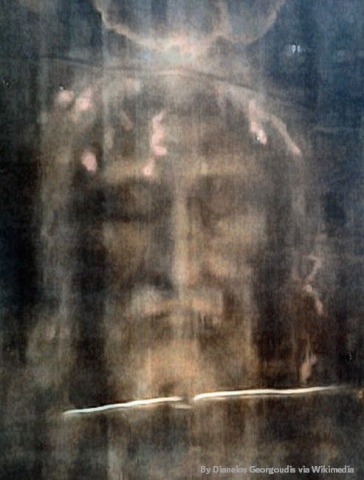
These lines, delivered by Joseph Ratzinger three years before his accession to the papacy, are such pure gold that I can add nothing to them. They come from a talk he gave in August, 2002, titled “The Feeling of Things, the Contemplation of Beauty,” and ought to be better known – not least by those of us who attempt rational apologetics.
+++++ + +++++
“All too often arguments fall on deaf ears because in our world too many contradictory arguments compete with one another, so much so that we are spontaneously reminded of the medieval theologians’ description of reason, that it ‘has a wax nose’: In other words, it can be pointed in any direction, if one is clever enough. Everything makes sense, is so convincing, whom should we trust?
“The encounter with the beautiful can become the wound of the arrow that strikes the heart and in this way opens our eyes, so that later, from this experience, we take the criteria for judgment and can correctly evaluate the arguments.
* * *
“Now however, we still have to respond to an objection. We have already rejected the assumption which claims that what has just been said is a flight into the irrational, into mere aestheticism.
“Rather, it is the opposite that is true: This is the very way in which reason is freed from dullness and made ready to act.
* * *
“Today another objection has even greater weight: … Can the beautiful be genuine, or, in the end, is it only an illusion? Isn’t reality perhaps basically evil? The fear that in the end it is not the arrow of the beautiful that leads us to the truth, but that falsehood, all that is ugly and vulgar, may constitute the true “reality” has at all times caused people anguish.
“At present this has been expressed in the assertion that after Auschwitz it was no longer possible to write poetry; after Auschwitz it is no longer possible to speak of a God who is good. People wondered: Where was God when the gas chambers were operating? This objection … shows that in any case a purely harmonious concept of beauty is not enough. It cannot stand up to the confrontation with the gravity of the questioning about God, truth and beauty.
* * *
“[In Christ] the experience of the beautiful has received new depth and new realism. The One who is the Beauty itself let himself be slapped in the face, spat upon, crowned with thorns; the Shroud of Turin can help us imagine this in a realistic way. However, in his Face that is so disfigured, there appears the genuine, extreme beauty: The beauty of love that goes ‘to the very end’; for this reason it is revealed as greater than falsehood and violence. Whoever has perceived this beauty knows that truth, and not falsehood, is the real aspiration of the world. It is not the false that is ‘true,’ but indeed, the Truth.
“It is, as it were, a new trick of what is false to present itself as ‘truth’ and to say to us: Over and above me there is basically nothing, stop seeking or even loving the truth; in doing so you are on the wrong track. The icon of the crucified Christ sets us free from this deception that is so widespread today. However it imposes a condition: That we let ourselves be wounded by him, and that we believe in the Love who can risk setting aside his external beauty to proclaim, in this way, the truth of the beautiful.
* * *
“Is there anyone who does not know Dostoyevsky’s often-quoted sentence: ‘The Beautiful will save us’? However, people usually forget that Dostoyevsky is referring here to the redeeming Beauty of Christ. We must learn to see him. If we know him, not only in words, but if we are struck by the arrow of his paradoxical beauty, then we will truly know him, and know him not only because we have heard others speak about him. Then we will have found the beauty of Truth, of the Truth that redeems. Nothing can bring us into close contact with the beauty of Christ himself other than the world of beauty created by faith and light that shines out from the faces of the saints, through whom his own light becomes visible.”